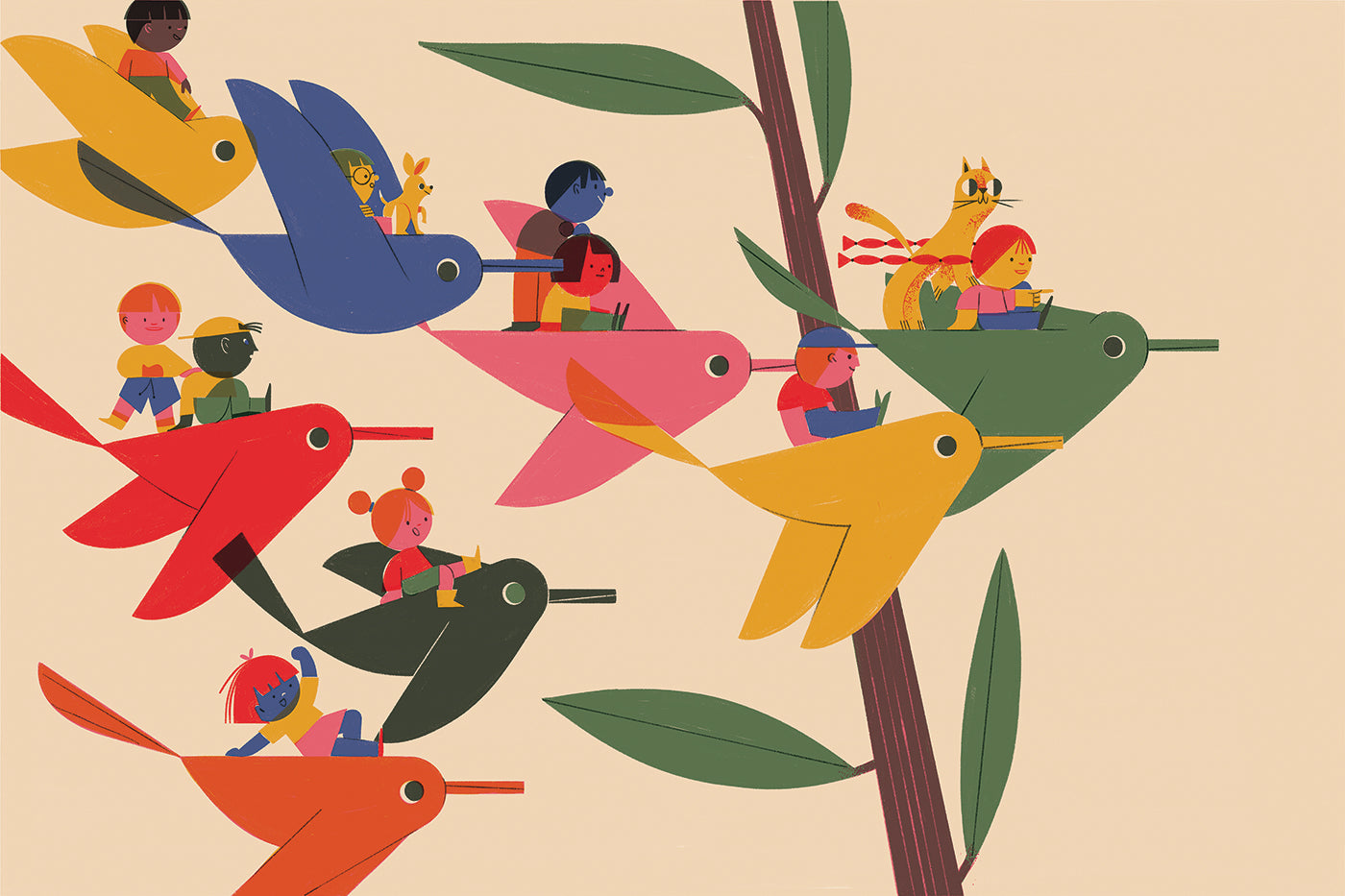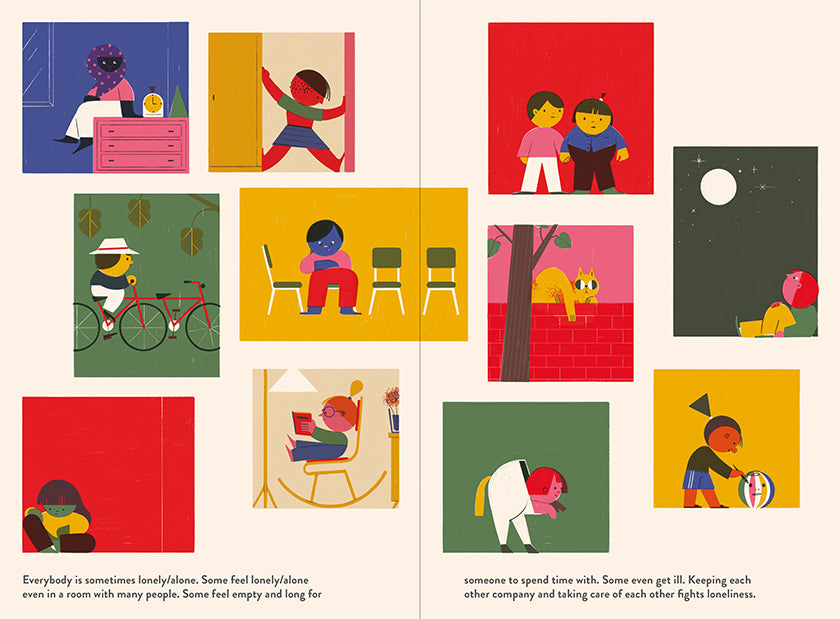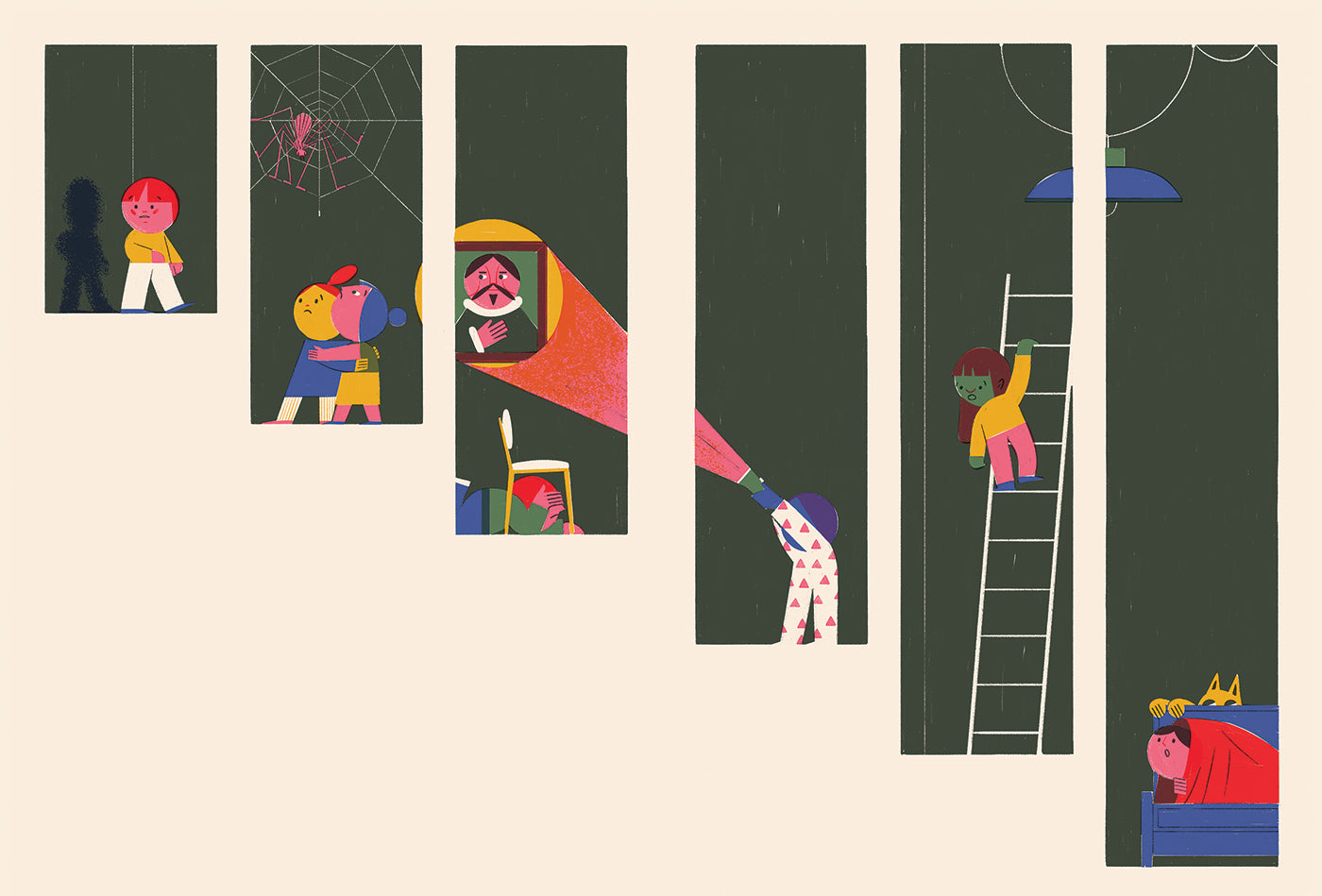Your Cart is Empty
Buy a book, plant a tree.
Everybody feels the same, sometimes

The feelings we share, desires that compel us, and emotions that rouse individuals, they are all feelings that are experienced by others. From a warm sense of adoration to unsettling loneliness, from angry to laughing, regardless of religion or ethnicity, we all share the same feelings as other humans. Argentine graphic designer Marcos Farina is the playful illustrator behind You and Me and Everybody Else, a project he pursued because he wanted to explore empathy as a subject matter. He unravels the latest Little Gestalten book and the message he hopes children can and will learn.
Did you have any design heroes or styles growing up?
Here I fall into the designer's cliche, but it's impossible not to name the Bauhaus as inspiration. What interests me most about naming a school and not a hero or heroine is that the school was a place where everything was shared. Everyone was inspired by everyone, that is a sign that design and illustration are like science where there is no tabula rasa because one draws in a context and with a story. The context in which we live, we are a collective that advances together, the concept of personal style and the act of adjudging the belonging of a movement is only a reflection of an individualistic culture.
The complex system that generates these heroes and heroines disables the mass in the process that contributed to the area. Of course, there are men and women that I love their work, but we have to understand that the hero and heroine are just the tips of the iceberg, and underneath is the work of many people.

Can you tell us how You and Me and Everybody Else was born and what made you want to tell this story?
I was very interested in working on the word 'empathy' for a book. Empathy as a way to put yourself in another person's place, not only allows us to try to understand the other a little more, but also to recognize ourselves, and understand what place we occupy. It was from the word empathy that I started working on the project, and there Maria (Little Gestalten editor) appeared and helped me with this. It was a long year of emails with Maria embodying this idea.
Why were encouraging empathy and self-reflection topics to cover? What do you hope this book teaches others about themselves and human behavior?
Being able to develop empathy is something valuable for life in society. and this awareness of the existence of others is important. I think that being able to reflect that the same things happen to all of us, but maybe in a different way or in a different context, is something essential to generate change in how we see the world.
If we understand that playing is playing and that we all play, I think it is easier to be tolerant of those who play differently than we do. Accept diversity without feeling alone. It is necessary to normalize that we are not alone, that there is no single way of doing things, and that ultimately we all go through the same moments in life.
For children, feeling alone doesn't have a positive value. I think it is necessary to work in a society where individualism is not a positive thing. It is vital to have the ability to put yourself in the place of the other because that makes us more sensitive to different ways of leading life.

How does the book breakthrough cultural differences?
Differences exist and must be known and recognized as valid. Being open to encounter the different and even with the ability to incorporate elements of the offbeat. I think this book talks about what keeps us the same, understanding that no matter how different the other seems to us, some things define us as people. That makes comparing action much closer.
What design techniques did you use for the book and its visual identity?
I'm a person who works in zigzag, going from the word to the image, from the paper to the screen. My method always starts from a new search, and many (many) questions. The first instance of each project is to generate its particular rules, in this case, I wanted to create a standard figure of a child to improve the capacity for identification and also the role change between the characters inside the book. At the same time, generating empathy and individual representation with different looks.

How would you describe the aesthetic and printing techniques of the book?
My work is always based on simple shapes and flat colors, supported by geometry and structure. Seeking that the hard forms become soft, with the help of the movement and the colors. Every shape in the book is drawn with the pulse of my hand and the help of the ruler. These are details of keeping the analog within the digital and obtaining the sensitivity of the geometry with human errors. The printing of the book gives meaning to the technique. I studied visual arts, specializing in handmade printing techniques, and my way of working is the representation of the thought of the superposition of colors in a silk-screen print or a woodcut.
Learn more about this picture book builds bridges between you and me and everybody else. Available in German and English.